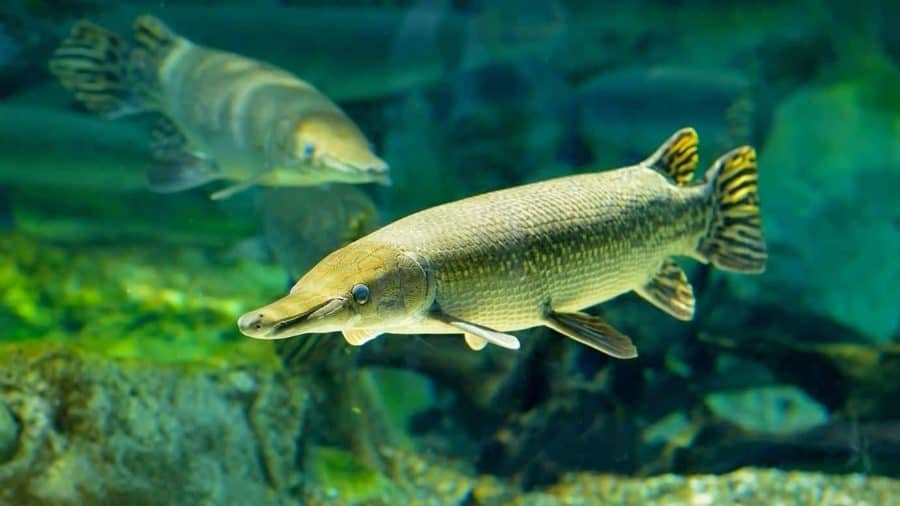“Having living things around that maintain all these ancient features helps us understand what’s going on in the fossil record,” Lemberg said. “If we can figure out what some of these features are being used for with the modern gar, maybe we can better interpret when those features pop up in other fossils.”
Overcoming the physics of water
Unlike humans, whose jaws open and close on a simple hinge, fish have complex skulls with multiple bones, joints and cartilage that slide, flex, and rotate to open the jaw and expand the palate. This helps fish overcome a basic problem of physics—when approaching food underwater, their bodies also push a wave of water ahead of them. Without compensating for this, it would push it out of the way (think about how hard it is to pick a crumb out of a glass of water without trapping it against the side).
Teleosts, which make up the vast majority of modern-day, ray-finned fish like bass or snappers, overcome this problem by opening their mouths, expanding their palates and parts of the skull at various points to create suction and draw water through their gills. Gars were thought to be simple “lateral snappers” that approach their prey and slash their long snouts to the side while chomping down with their long rows of teeth.
CT scan animation of how an alligator gar catches its prey. (Courtesy of Justin B. Lemberg et al.)
For the study, Lemberg used 17 alligator gars that he raised himself after picking them up from a fish hatchery in Warm Springs, Georgia, and driving them all the way back to Chicago in the back of his Honda Civic.
He then trained the gars to feed on pieces of freeze-dried krill held in forceps under bright lights, so he could use a special video camera that records at 500 frames per second. Surprisingly, when one of the gars was positioned against the side of the aquarium and couldn’t use its characteristic slashing motion, Lemberg could see the piece of krill it was about to eat start to move into the mouth as soon as it opened its jaws, then stay inside as it snapped them shut. That meant the gar was creating suction too, just like a largemouth bass. And it all happened in just 42 milliseconds.
“It was completely unexpected to see a gar simply open its jaws and see its food fall into it like that,” Lemberg said.
Lemberg also used a detailed CT scan of the gar’s skull to reconstruct the movements of all its bones in a 3-D software model. He noticed that when watching video showing the top of the skull, he could see flashes of white, unexposed skin showing as the gar snapped its jaws shut. When he recreated this movement in the model, it showed that part of the palate must be sliding outward along a unique joint called the basipterygoid process to expand the jaws and create the suction.
“What that indicates is just by opening its jaws, which are broad, flat plates, it’s creating negative pressure between the jaws which helps to draw the prey in,” Lemberg said. “Then when the jaws are closing, instead of having a potential to push the prey out with the water as it squishes together, instead it expands these posterior elements to continue that suction further back.”
Showing the gar some love
The study adds to the relatively thin literature about gars and the mechanics of how they feed. Lemberg said the only other study specifically about gar he found was published in 1980, and another that compared them to other fish from 2004.
And maybe it’s about time for the lowly gar to get some scientific love. In March of this year, the Arkansas legislature voted the alligator gar as its state fish after a campaign started by a 10-year-old boy.
“There’s definitely a need to have this data because it can tell us so much about how ancient fish fed,” Lemberg said. “Since it wasn’t out there, I had to go collect it myself.”
Citation: “Feeding kinematics and morphology of the alligator gar,” Justin B. Lemberg, Neil H. Shubin and Mark W. Westneat. Journal of Morphology Aug. 6, 2019. DOI: 10.1002/jmor.21048


